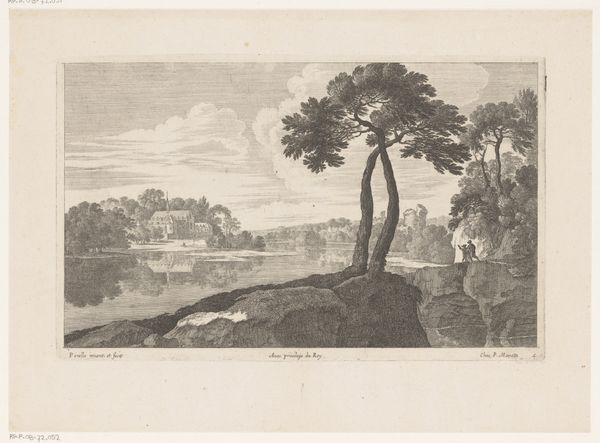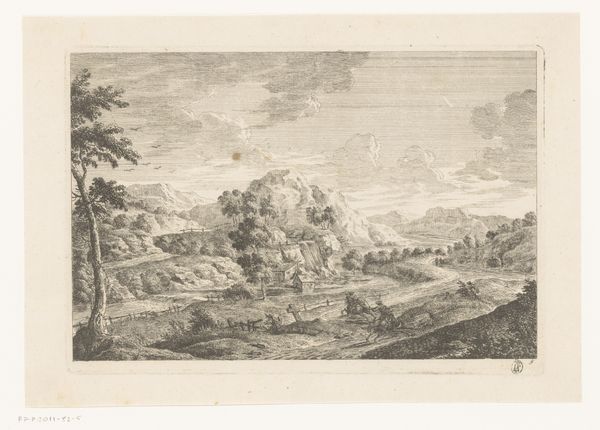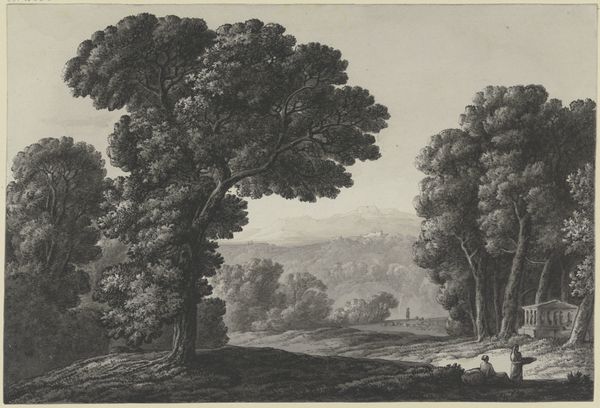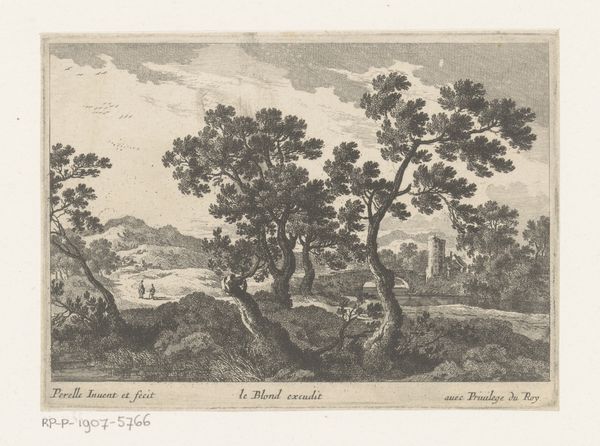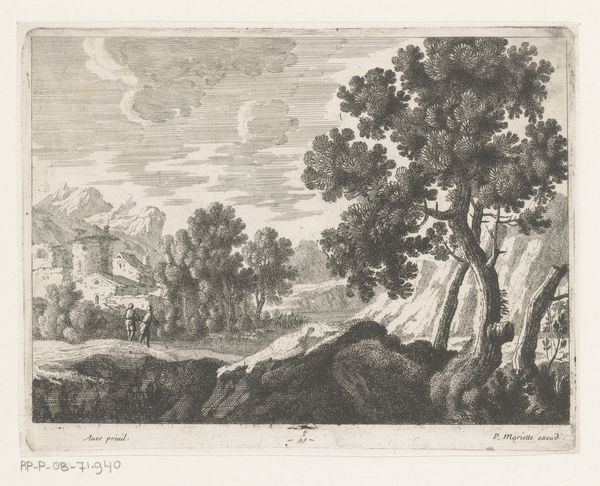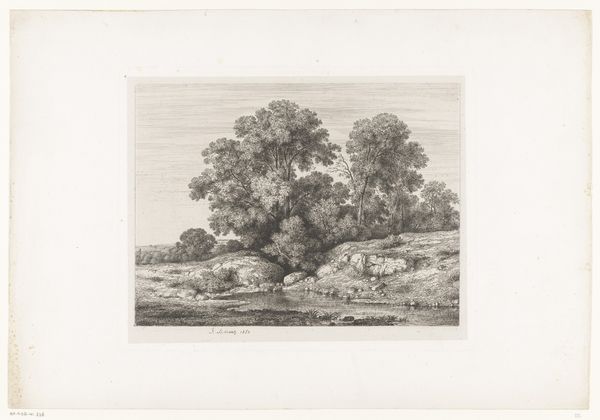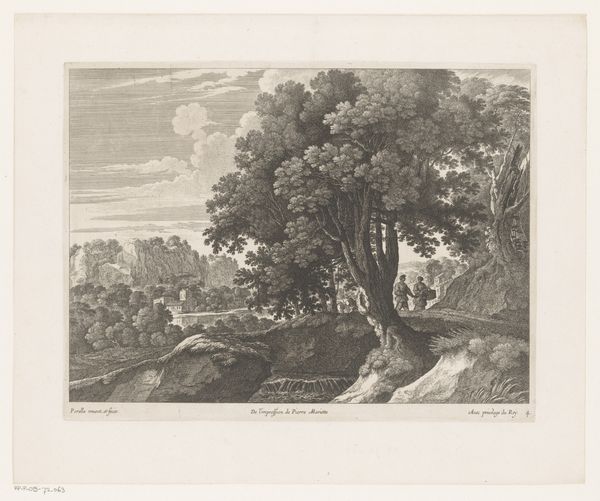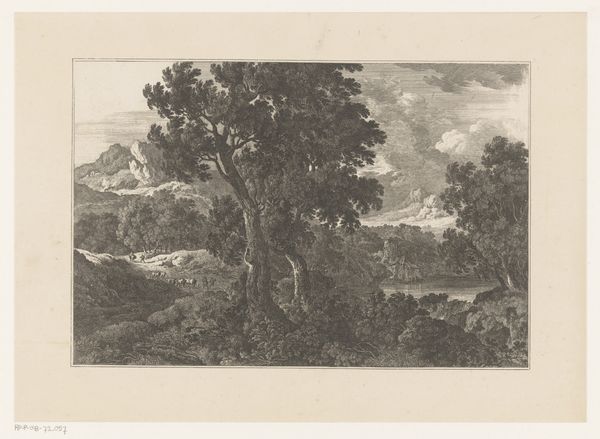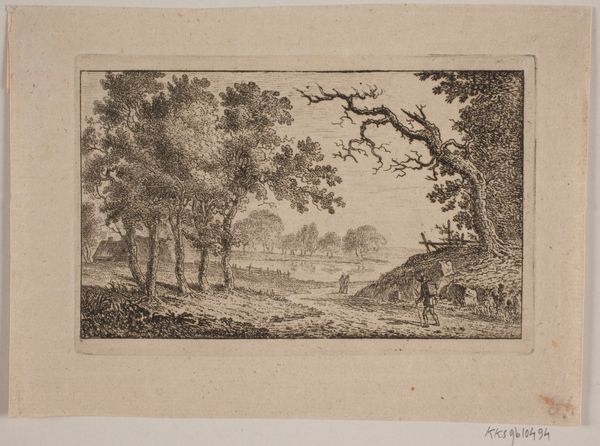
engraving
#
dutch-golden-age
#
old engraving style
#
landscape
#
history-painting
#
engraving
Dimensions: height 195 mm, width 319 mm
Copyright: Rijks Museum: Open Domain
Curator: Let's discuss this delicate engraving titled "Landschap met boom bij meer," or "Landscape with Tree by a Lake," created sometime between 1613 and 1695. It is now part of the Rijksmuseum collection. What are your first impressions? Editor: It feels strangely melancholic. That solitary tree, dominating the scene, almost seems burdened. And yet, there’s a tranquility, a silent story being whispered by the landscape. Curator: Precisely! Dutch Golden Age landscapes, while appearing idyllic, often reflect the social and economic transformations of the time. The meticulous detail in the engraving, the contrasting light and shadow, it speaks to a society grappling with immense change and, perhaps, finding solace in the land. Editor: The engraving's starkness heightens this effect. It is such an unforgiving medium. You can't hide in colours. All is exposed and every mark lays there bare to your eyes. Is there any social subtext I'm missing? Curator: In a way, yes. This period saw the rise of a powerful merchant class, and landscapes became increasingly popular as symbols of prosperity, ownership, and national identity. The detail isn't just aesthetic; it is almost asserting a kind of dominion over the landscape. Editor: Ah, interesting! But there’s a funny tension, isn’t there? I mean, the scene itself is rather humble. Those tiny figures are overwhelmed by nature. Are we supposed to feel empowered or… puny? Curator: Perhaps a little of both. Dutch landscape art is fascinating because it straddles that line between celebrating human achievement and acknowledging the awesome power of nature. These tensions reflect broader intellectual debates circulating in 17th-century Netherlands. Editor: It reminds me of those old landscape tapestries and it somehow feels cinematic. There is also a sort of visual balance and harmony. What really makes me think is the sense of depth— the lake reflects a hidden realm, hinting at the intangible. Curator: A wonderful way to think about it. Considering it is at the Rijksmuseum collection, this is one work that connects us to that specific moment of Dutch cultural self-discovery. Editor: Well, I'm off to find my own lonely tree now! Maybe I'll get a print for my room.
Comments
No comments
Be the first to comment and join the conversation on the ultimate creative platform.
